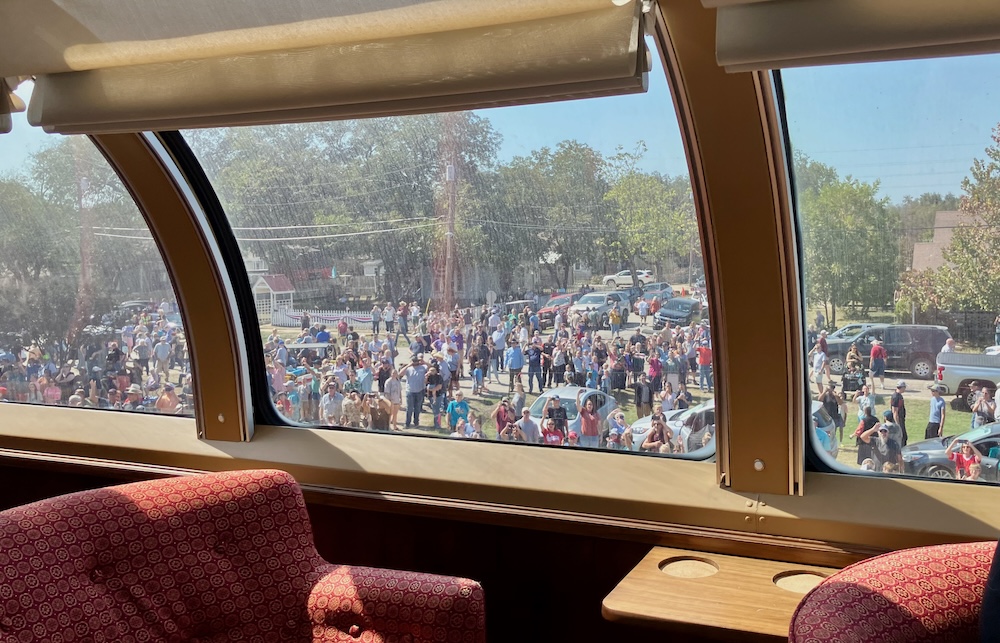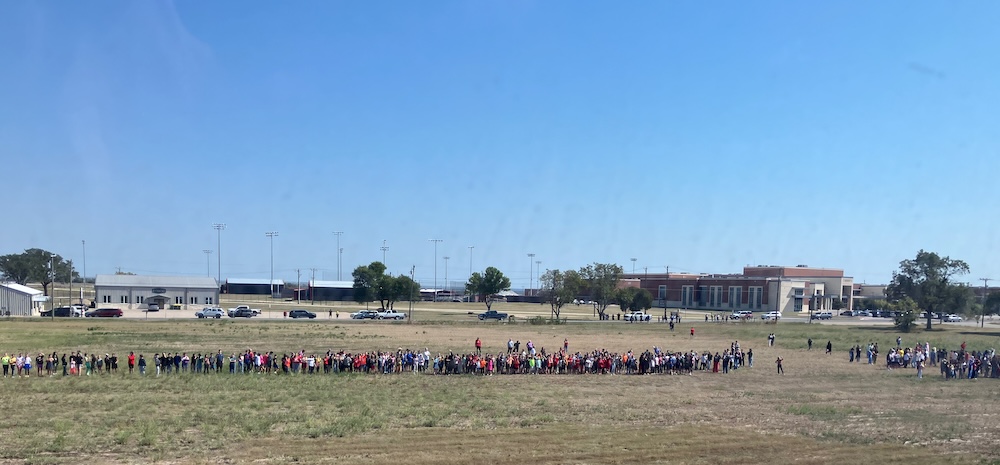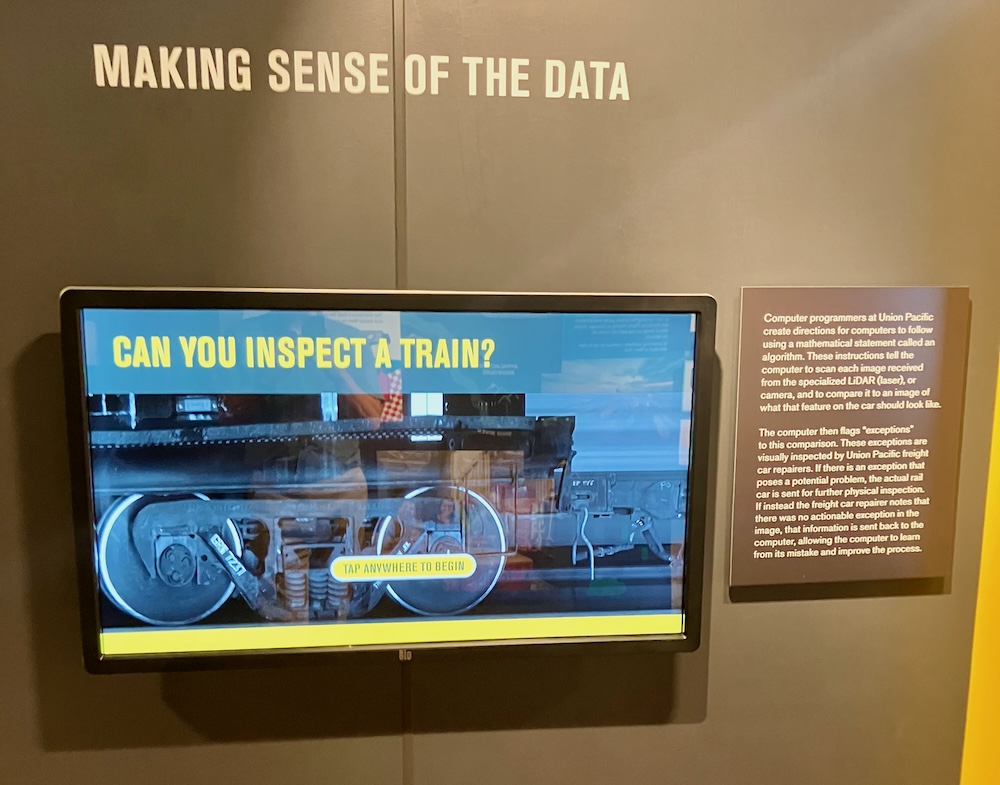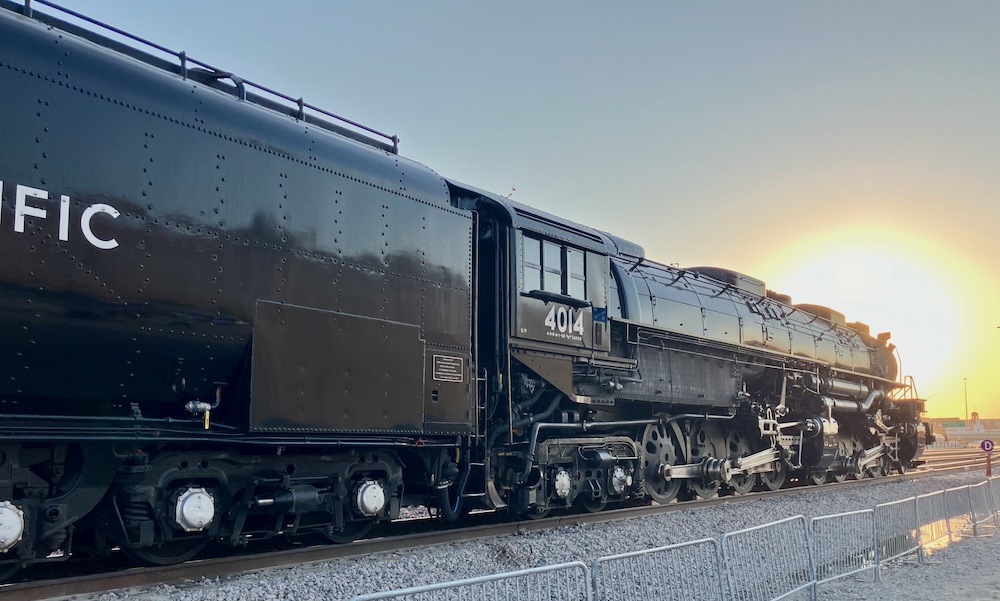
Seemingly every resident of West, Texas – population 2,531 – has turned out to witness a spectacle. Townspeople are lined up on both sides of Union Pacific’s Fort Worth Subdivision, which runs smack through the middle of downtown. All eyes are looking to the south, hoping to catch the first glimpse of UP 4-8-8-4 No. 4014. The world’s largest steam locomotive is due any minute now.
You can feel the anticipation in the crowd as the Big Boy’s headlight pops into view at 1:43 p.m. on this sunny October afternoon. The 1941 Alco makes a grand entrance: Flags flying, bell clanging, whistle blowing, dual stacks talking. Many people raise their cameras and phones to capture the moment. Others plug their ears. And some simply watch, taking in the enormity of the locomotive and the spotless Armour yellow consist that comes to a stop right on schedule at 1:45 p.m.
Ed Dickens, the manager of UP’s heritage operations, meets local officials for a brief trackside ceremony designating West as a Train Town USA. Meanwhile, the UP executive team and members of the media climb aboard the Walter Dean dome lounge. The smiling crowd outside – now steam admirers, one and all – waves as the Big Boy begins rolling the train toward Fort Worth. On the outskirts of town, the entire student body stands in a trackside field and gets a living history lesson as the 4014 storms past.

The Oct. 9 whistlestop in West is just one small slice of this year’s Big Boy tours, which have generated an incredible amount of goodwill for Union Pacific. “You can see the draw,” CEO Jim Vena says while glancing out the window.
How much of a draw? The Big Boy’s 10-state Heartland of America tour and five-state Westward Bound tour attracted more than 305,000 people to display days, plus an uncounted multitude at grade crossings and more than 50 whistlestops like the one at West. Display days also were set aside exclusively for UP employees and their families.

The railroad industry’s image has taken a beating over the past few years due to the high-profile hazmat wreck in East Palestine, Ohio, labor upheaval, job cuts, and the service problems that followed the onset of the pandemic. These negative headlines have overshadowed the fact that railroads have a good story to tell, especially when you compare trains and trucks.
As Union Pacific shows, railroads have at their disposal the ultimate public relations tool: The steam locomotive.

Once you have the public’s attention – and steam commands attention – it’s an opportunity to tell the advantages of rail. The Experience the Union Pacific museum car does just that at Big Boy display events. The car’s exhibits spotlight the iconic railroad’s history and technology, including an interactive display that lets you try your hand at inspecting wheels – and then humbles you by showing how much faster and more accurately an automated system can spot defects. The exhibits also remind people of the vital work the railroad does, from keeping the lights on and hauling crops to carrying your car from the assembly plant and delivering consumer goods to warehouses. And they highlight the fuel efficiency and environmental benefits of rail.
All this makes you wonder why Union Pacific and Canadian Pacific Kansas City are the only Class I railroads with steam programs. There’s no question that it’s a massive effort to launch a steam train tour. Or that steam locomotives burn cash. Yet the cost to run UP’s heritage program amounts to a rounding error in a company with more than $22.6 billion in annual revenue.
It’s hard to put a price on a railroad’s reputation and image, but it’s easy to see the benefits of a steam ambassador. Steam has a unique ability to connect railroads with lineside communities, current and retired employees and their families, and a public that has largely lost touch with railroads. “This is the biggest star. It really is,” Vena says.

You can reach Bill Stephens at bybillstephens@gmail.com and follow him on LinkedIn and X @bybillstephens














It would be nice for BNSF to bring some steam back into service. The Northwest Railroad Museum restored an NP switcher and has the GN 2-8-0 that used to be in Seattle at the zoo for years. It’s missing a tender, but if a museum can do it with grant money and public donations, it could certainly be done at the corporate level. There’s a GN 4-8-2 in Montana and a Burlington 4/8-4 in South Dakota (I believe). If word got out that these two examples were to be brought back to operational status by the railroad, I do think there would be a long list of folks willing to put in the time and labor needed to do the job. Can’t forget that SP&S 700 is out running also. Just saying.
Wonder how much these attractive dinosaurs cost to run per mile? Arranging for coal and water may be quite a challenge. Any problems with the smoke? Ah, but to stand trackside as one comes charging by!
The big boy now runs on oil.
Very True. NS might wish they had not dropped theirs……
Oh, but the hedge fund ghouls would surely put a stop to any such nonsense!
A good point made. Might it not provide strong positive benefits for NS to reactivate 1218 and 611 as “steam ambassadors.” Perhaps use them, as one example, as a fund-raising tool and then to send the profits to towns such as east Palestine. And what about CSX with 614 languishing? I know it is more than a crazy long shot, but there is a 2-6-6-6 in a museum…Couldn’t they use a little bit of positive PR?
I guess watching the miracles happen on the EBT makes me silly.
Actually two museums have a 2-6-6-6: the Henry Ford Museum in Dearborn and the B&O museum in Baltimore.
To the legend, Roll on Big Boy, Roll on!…